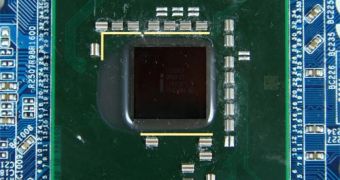Intel is preparing a new chipset to go with the new generation of processors for quite some time now. This new chipset, named X38, will feature some interesting technologies, sadly some of them are aimed exclusively at the enthusiast market, so expect really high prices. According to several motherboard manufacturers and vendors, cited by the news site DigiTimes, Intel is developing two new technologies named Extreme Memory and Extreme Tuning Utility and the company will integrate them in the X38 chipset that is due for launch in October.
The Extreme Memory technology is similar in concept and functioning mode to the technology used by the graphics chips manufacturer Nvidia in the SLI Memory. This technology allows some special, high quality memory modules to operate at higher than standard clock frequencies on supporting motherboards. The higher clock frequencies used should translate into an increased data bandwidth and improved performance. The Extreme Memory technology will only support DDR3 memories and will not be compatible with the DDR2 standard, but on the other hand this technology will be implemented on the next generation Centrino mobile platform and the desktop aimed P35 chipset. As the Intel memory technology needs high end memory, it is said that the company is cooperating with performance centered memory makers like Kingston Technology and OCZ Technology Group in order to implement supporting memories.
The other performance increasing Intel technology is called Extreme Tuning Utility and it is intended as an interface that should allow users to tune and change their BIOS settings directly from the operating system, without the need to reboot the machine. This technology will appear first only on the X38 chipset and Intel will allow its partners to change and customize the software interface.
Along side these two new technologies, it is said that Intel plans to send engineering samples of processors based on the new Nehalem microarchitecture sometime in October, while the launch on the market will take place during the second half of 2008. The Nehalem processors will adopt the new Socket B interface and just like AMD's own products, they will integrate a built-in memory controller and an updated version of the Hyper-Threading technology. Just like AMD is preparing the Fusion platform that will integrate the processor and the GPU into a single unit, Intel's Nehalem processors will support an integrated graphics engine.

 14 DAY TRIAL //
14 DAY TRIAL //